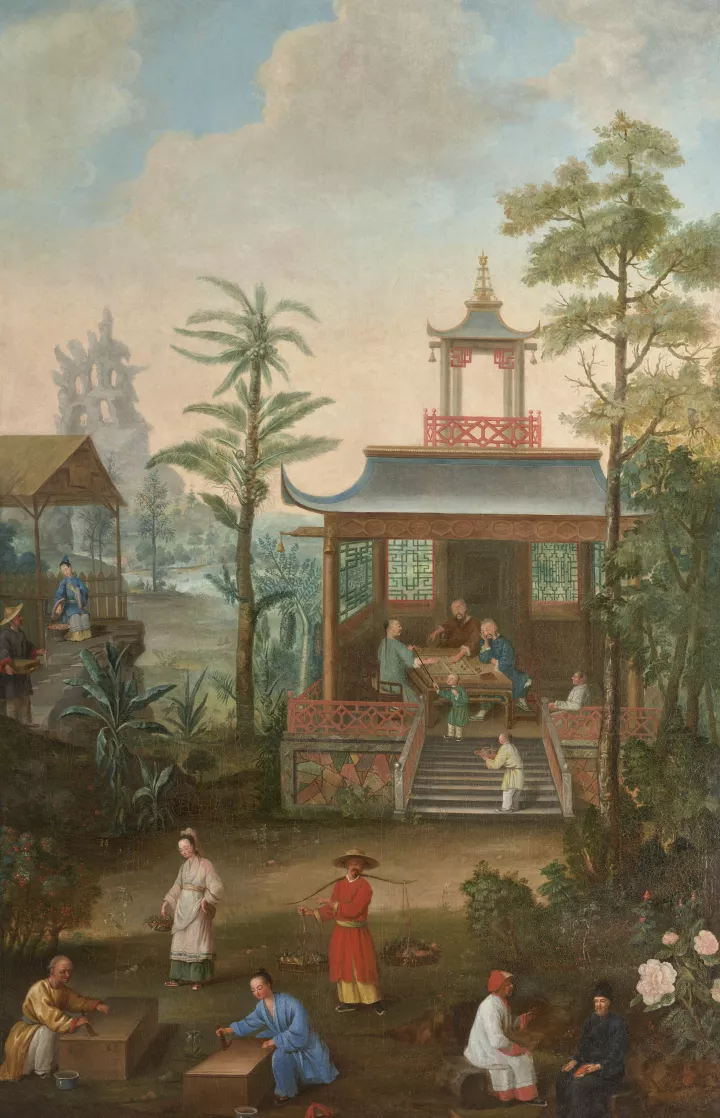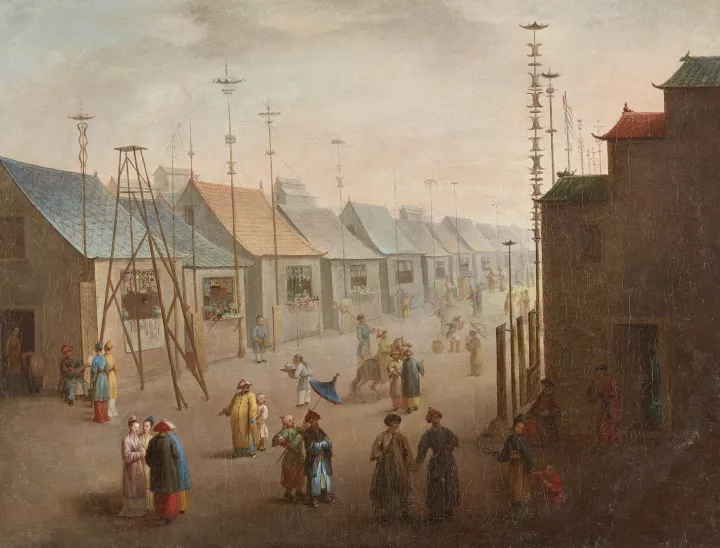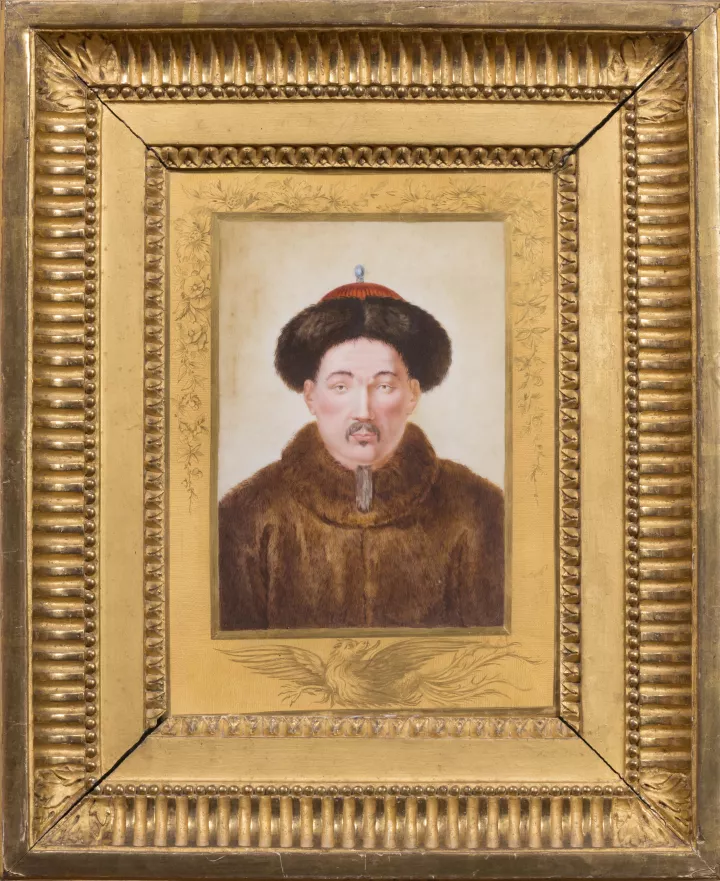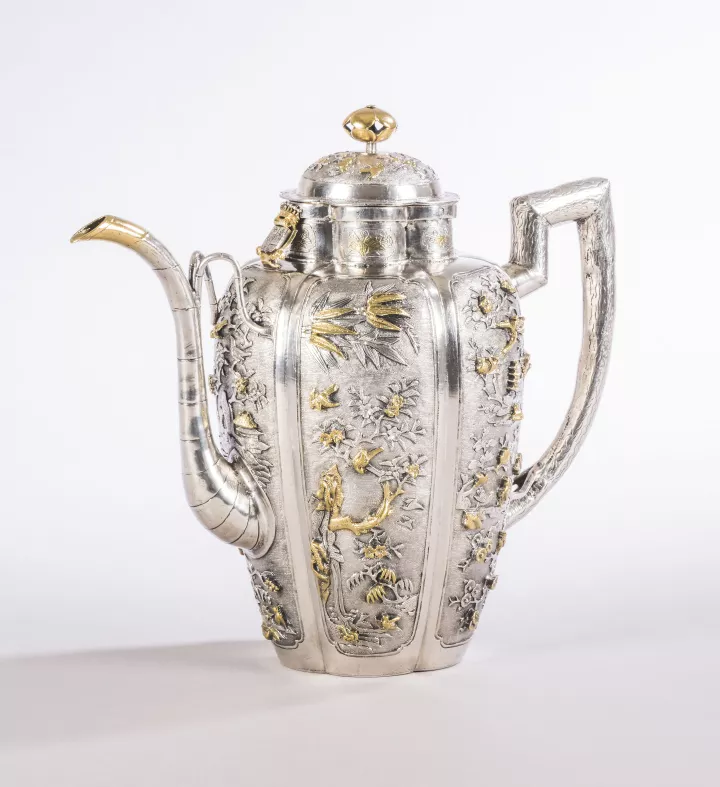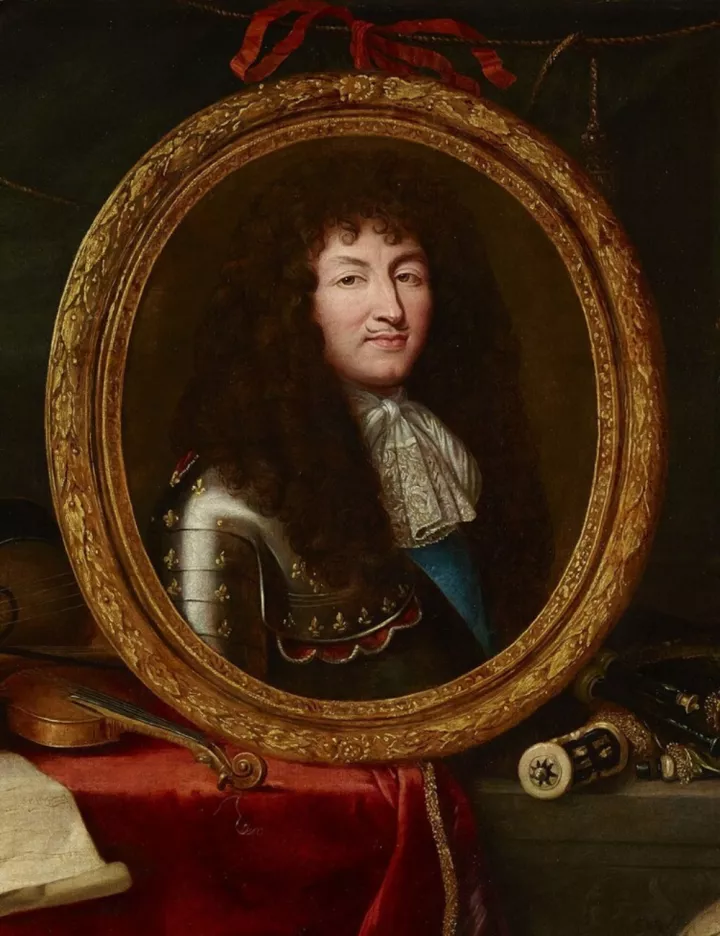From April 1st to June 30th 2024, the Forbidden City and the Palace of Versailles will be holding an exhibition at the Palace Museum in Beijing, focusing on exchanges between France and China in the seventeenth and eighteenth centuries.

In Beijing The Forbidden City and the Palace of Versailles Exhibition
To mark the sixtieth anniversary of the establishment of diplomatic relations between France and China by General de Gaulle on 27 January 1964, and as part of the Franco-Chinese Year of Cultural Tourism, the Palace of Versailles and the Forbidden City's Palace Museum will be holding an exhibition devoted to exchanges between France and China in the seventeenth and eighteenth centuries. Running from 1st April to 30 June 2024, this exhibition will feature over 200 works, mainly from the two museums' own collections, and will provide a fresh perspective on a little-known story interweaving science, diplomacy and trade with the tastes of a bygone era, know-how and artistic creation.
THE EXHIBITION
The exhibition illustrates Louis XIV's diplomatic policy vis-à-vis his contemporary, the Emperor Kangxi, marked notably by the sending of French Jesuit priests to China in 1688, who joined the court of Peking as mathematicians to the King. Relationships built on mutual trust and esteem, now often forgotten, were thus established and lasted until the end of the eighteenth century, all of which contributed to the birth of modern sinology in France.

Portrait of the Emperor Kangxi in court dress
Beijing, Palace Museum
© D-R
Even before Louis XIV sent the Jesuits to China, the sumptuous reception given by the King in 1686 to celebrate the arrival of ambassadors from the King of Siam marked the beginning of the French court's keen interest in the Far East. The diplomatic gifts brought on this occasion, which included many Chinese objects, helped develop the court's and the royal family's taste for artistic creations from the Middle Kingdom.
Fine gold and silverware took pride of place among the gifts presented to Louis XIV by the Siamese ambassadors: some fifty pieces in different metals (including gold, silver and tombac) and from various geographical origins (Siam, China, Japan, etc.) were among the gifts offered by Phra Narai, with his minister, Constance Phaulkon, offering another thirty or so.
This jug was one of the items presented to Louis XIV in 1686. Miraculously preserved, it is the only known surviving gift of precious metalware presented by the Siamese ambassadors. This work was acquired in 2018 and listed as a National Treasure.
A taste that spread
The attraction for China and Chinese art at the French court was manifested in various ways and through four main phenomena: the importation of Chinese objets d'art; the transformation of certain imported works, notably by the addition of gilded bronze mounts to porcelain objects and the use of lacquer panels on French furniture; the imitation of Chinese products, including the frenetic quest to discover the secret of manufacturing hard-paste kaolin porcelain; and the powerful influence of Chinese art on French art, particularly on the decorative arts.
The exhibition illustrates how Chinese art became an inexhaustible source of inspiration for French artists and intellectuals, in fields ranging from painting, objets d'art, interior design and architecture, to garden design, literature, music and science. The artworks brought together in Peking also bear witness to the genuine fascination felt by the court of Versailles and by leading French art lovers for all things Chinese. The exhibition also reveals the strong interest of Chinese emperors in French scientific knowledge and know-how during the seventeenth and eighteenth centuries.
This relationship between France and China lasted until the end of Louis XIV's reign and, despite the vagaries of history, this fruitful policy was continued by his successors: Louis XV and Louis XVI. The Jesuit mission remained very much alive and was actively engaged in French political and intellectual circles.
The political and intellectual ties forged between France and China in the seventeenth-century gave rise to a veritable golden age of Franco-Chinese diplomatic relations that lasted until the French Revolution.
An unprecedented collaboration with an enhanced message
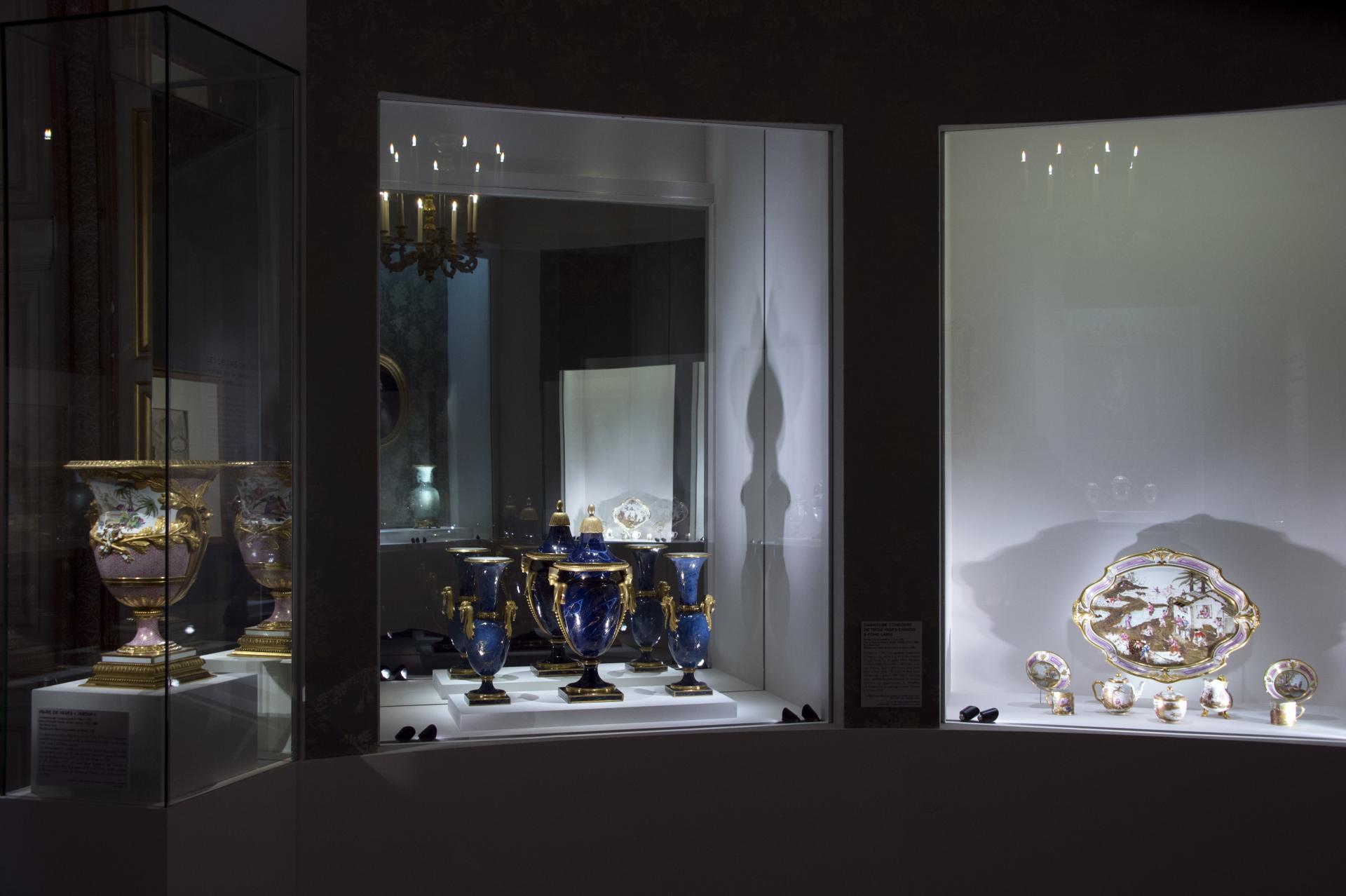
View of showcases from the "China at Versailles, Art and Diplomacy in the Eighteenth Century" exhibition, presented at Grand Trianon in 2014.
© EPV/Didier Saulnier
In 2014, an initial exhibition was held at the Palace of Versailles to mark the fiftieth anniversary of the establishment of diplomatic relations between France and China. The 2024 exhibition at the Forbidden City is an enhanced version, showcasing some of the prestigious acquisitions made by the Palace of Versailles over the last ten years. Another unique feature of this new exhibition is the manner in which parallels are drawn between works from the Chinese and French collections. This dialogue sheds light on the mutual interests of both cultures. Scientific collaboration between the teams at Versailles and the Palace Museum has also unearthed previously unknown objects and improved mutual knowledge of this ancient history.
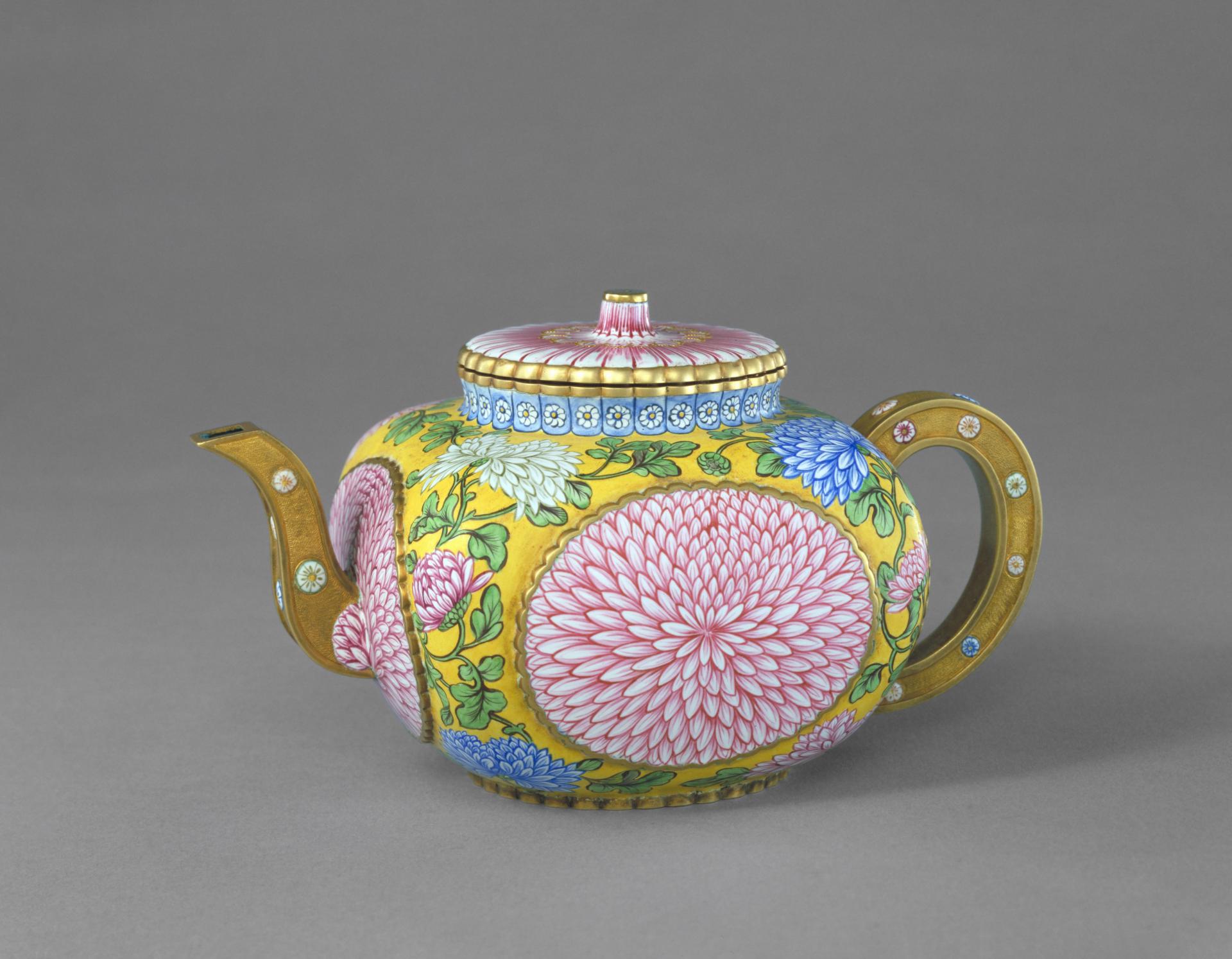
Teapot with handle and enamel chrysanthemum motif
Dating from 1783, France
Beijing, Palace Museum
© D-R
Some works of art
Curators
Marie-Laure de Rochebrune, Head Heritage Curator at the Palace of Versailles, assisted by Vincent Bastien, Doctor of Art History.
Guo Fuxiang, curator at the Palace Museum.
Exhibition organised in partnership with the Palace Museum.
An exceptional tour
The Royal Opera Orchestra of the Palace of Versailles will be touring China for the first time, holding a series of concerts in Beijing and several other Chinese cities, which have been scheduled to coincide with the joint exhibition by the Palace of Versailles and the Forbidden City (Palace Museum). Stefan Plewniak, conducting the Royal Opera Orchestra, will lead this exceptional tour with a programme of virtuoso arias for castrati and Vivaldi's famous Four Seasons. This series of fabulous concerts will showcase the skills of the Versailles orchestra's musicians, while paying tribute to the masterpieces of Western Baroque music.
Partners
PRACTICAL INFORMATION
Exhibition at the Forbidden City Museum from 1st April to 30 June 2024
- Address: 4 Jingshan Front St, Dongcheng, Beijing, China, 100009
- Times: 8.30 a.m. - 5 p.m. (Tuesday to Sunday)
- Contact: +86 400 950 1925 / https://www.dpm.org.cn/Home.html



